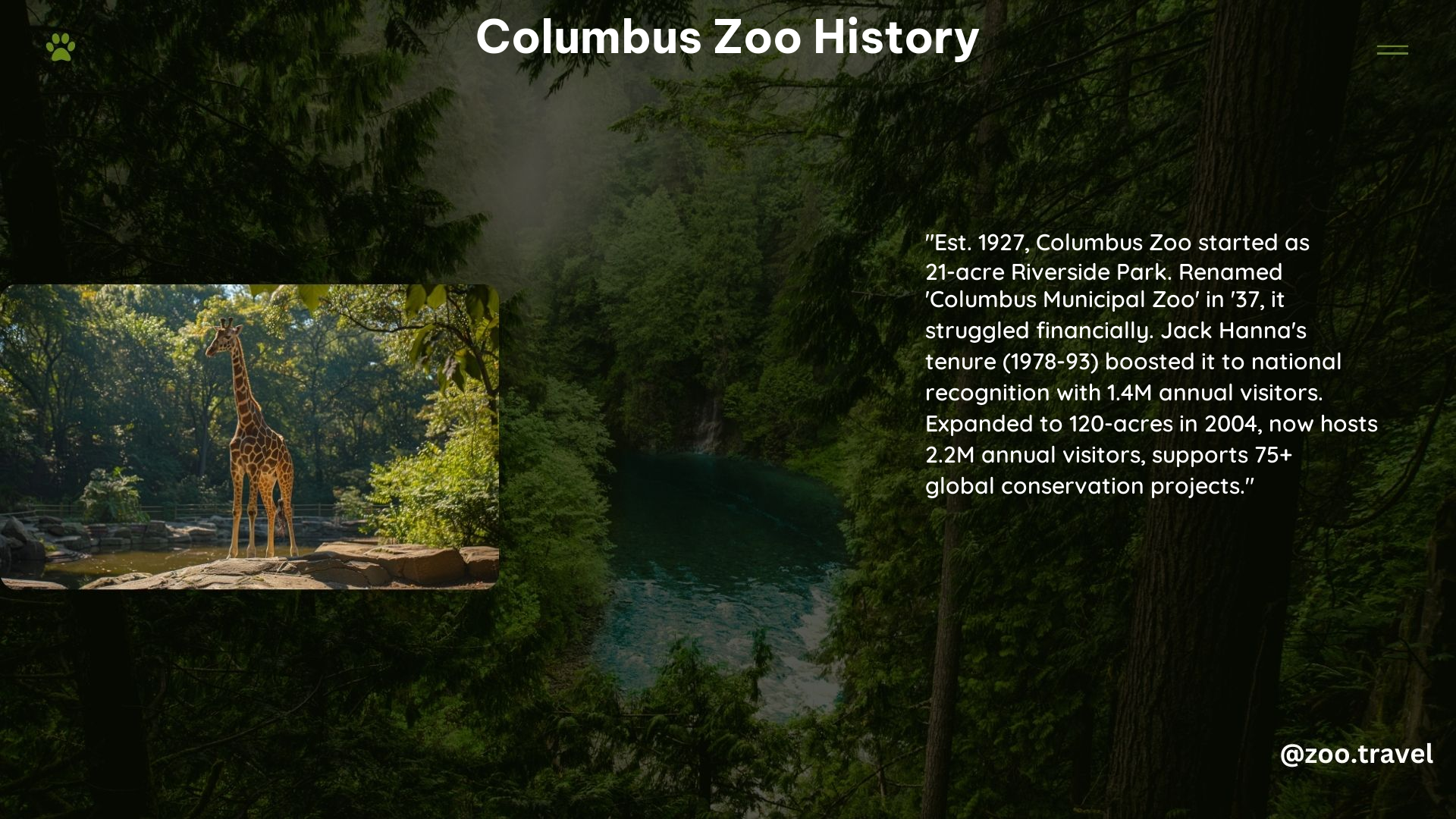The Columbus Zoo and Aquarium, located in Powell, Ohio, has a rich and fascinating history that spans over 95 years. From its humble beginnings as Riverside Park in 1927 to its current status as a world-renowned zoological institution, the Columbus Zoo has undergone a remarkable transformation, thanks to the vision and dedication of its leaders and the support of the local community.
The Inception of the Columbus Zoo
The idea for the Columbus Zoo was first conceived in 1920 when Harry P. Wolfe, the owner of the Columbus Dispatch, and the city’s mayor visited the St. Louis Zoo. Inspired by what they saw, they returned to Columbus determined to create a similar attraction for their own city. In 1927, the zoo was established on 21 acres of land near the O’Shaughnessy Reservoir, and it was initially known as Riverside Park.
The Early Years and Struggles

The zoo’s first building, which housed lions and tigers, was completed in 1932. In 1937, the zoo’s name was changed to the Columbus Municipal Zoo, and it began to rely on membership fees to fund its growth. However, by the 1950s, the zoo was facing financial difficulties, and the city of Columbus took over its management in 1951.
The Jack Hanna Era
In 1978, Jack Hanna became the director of the Columbus Zoo, and his leadership transformed the institution into a national attraction. Under Hanna’s guidance, the zoo’s annual attendance grew from around 360,000 to over 1.4 million visitors by 1992. Hanna’s charismatic personality and frequent television appearances helped to raise the zoo’s profile and attract more visitors.
Expansion and Modernization
In 2004, voters passed a measure to raise an estimated $180 million to expand the Columbus Zoo over the course of 10 years. This expansion included the addition of Polar Frontier, an exhibit featuring polar bears and Arctic foxes, and Heart of Africa, an exhibit showcasing lions, antelope, cheetahs, giraffes, and zebras. To accommodate these new exhibits, the zoo’s borders were expanded, and a new entrance was constructed along the relocated Powell Road.
Recent Developments
In 2009, the zoo’s executive director, Jeff Swanagan, passed away suddenly at the age of 51. Dale Schmidt, the zoo’s chief operating officer, was named executive director in November of that year. In 2020, the zoo opened its seventh and newest region, Adventure Cove, featuring California sea lions and harbor seals, as well as the world’s first 360-degree view acrylic tunnel. The zoo is currently undergoing a $40 million redevelopment of its historic North America region, which is scheduled to break ground in Fall 2023.
The Columbus Zoo’s Global Impact
The Columbus Zoo and Aquarium has a close working relationship with over 70 projects in 30 countries and has contributed over $3.3 million in the past five years to support conservation efforts around the world. The zoo’s commitment to wildlife preservation and education has made it a leader in the field of zoological institutions.
Conclusion
The Columbus Zoo and Aquarium’s history is a testament to the power of vision, dedication, and community support. From its humble beginnings as Riverside Park to its current status as a world-renowned zoological institution, the zoo has undergone a remarkable transformation, thanks to the efforts of its leaders and the support of the local community. As the zoo continues to evolve and expand, it remains a beloved destination for visitors from around the world, offering a unique and immersive experience that celebrates the wonders of the natural world.
